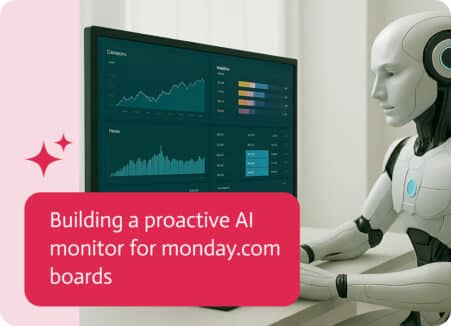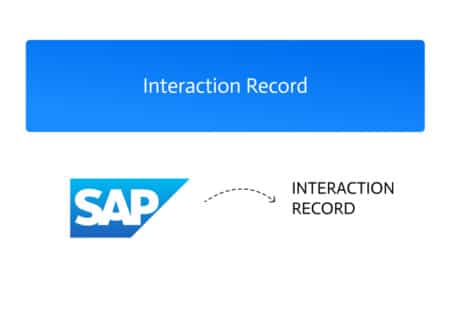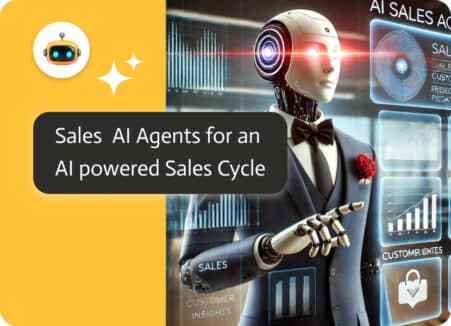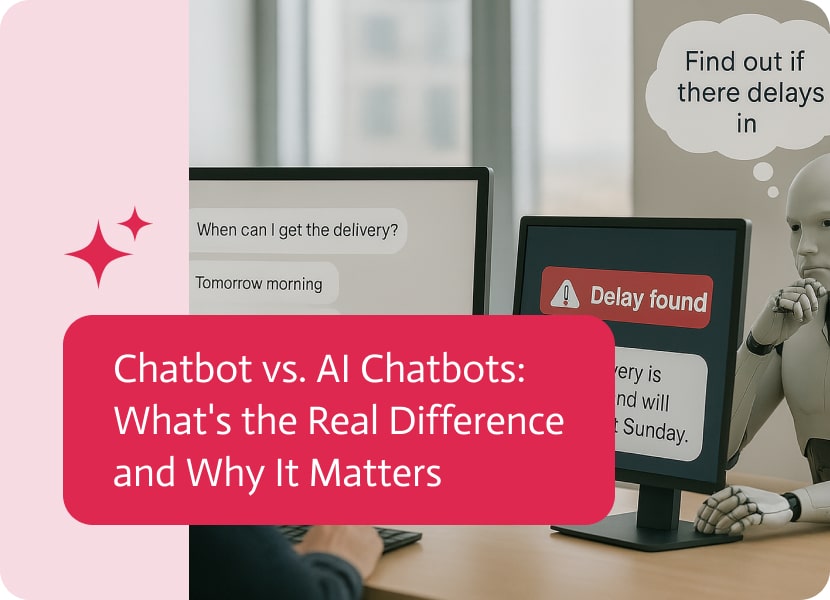
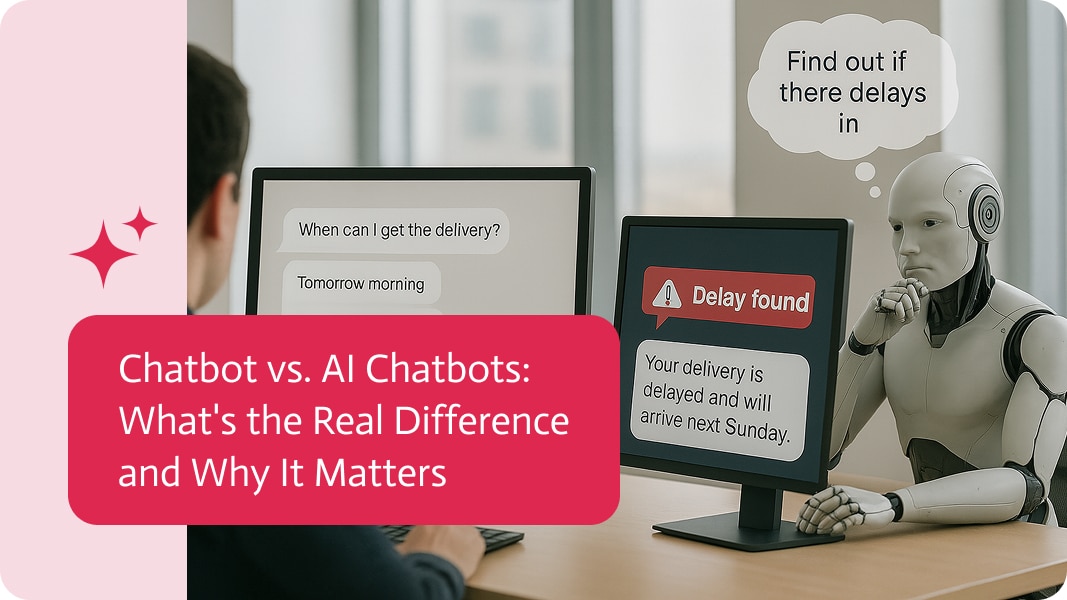
Chatbot vs. AI Chatbots: What’s the Real Difference and Why It Matters
Okay, so chatbots are all over the web these days, you can’t go to a site without seeing one pop up to ask if you need help. Some are really simple, just giving you basic answers, while others are the smarter ones that almost seem like people. What’s the deal? Well, regular chatbots are slightly different to AI chatbots, and that difference matters.
What makes them so different, or more importantly, which one should you use for your business? Let’s take a look.
What Is a Chatbot?
At its core, a chatbot is a piece of software designed to simulate conversation with human users. But traditional chatbots (also known as rule-based or scripted chatbots) operate using if-then logic.
How They Work
These bots follow decision trees and predefined rules. You, the creator, feed in all the potential questions and commands users might ask and the exact responses that should be delivered in return.
For example:
- If the user types, “What are your business hours?”
- Bot responds, “We’re open Monday to Friday, 9am to 5pm.”
But change the wording even slightly, say, “When do you close?” and the chatbot might draw a blank. That’s because it doesn’t “understand” the question in a human sense. It’s just scanning for keywords and following scripts.
Pros of Rule-Based Chatbots
- Simple to build and deploy
- Predictable behavior
- Easy to control and manage
- Great for FAQ-style interactions
Limitations
- Can’t understand natural language well
- Doesn’t improve over time
- Poor at handling open-ended or unexpected inputs
- Frustrates users who try to speak naturally
What Is an AI Chatbot?
Now, let’s talk about AI chatbots, sometimes referred to as conversational AI. These bots go far beyond canned responses. They use natural language processing (NLP) and machine learning (ML) to actually understand what the user is saying, even when phrased in a totally unexpected way.
How AI Chatbots Work
Instead of sticking to rigid scripts, AI chatbots learn from huge piles of real human conversations. They break down what a person says into intent and entities, figure out the context, and whip up smart replies-even to tricky or completely new questions.
They lean on four main tools:
- Natural Language Understanding (NLU): Grabs the sentence structure, meaning, and user intent.
- Machine Learning: Grows a little wiser with every chat.
- Generative AI: Whips up fresh replies on the spot.
- Context Management: Hangs on to facts so the talk feels less robotic, even over multiple turns.
Real-World Example:
User: “I need to find that invoice from last year-the one for Acme Corp.” AI Chatbot: “Got it. Can you confirm the invoice number or the approximate date so I can pull it up for you?” The bot does not just hunt for the word invoice; it reads the whole sentence, remembers what has already been said, and asks follow-up questions like a real person.
Pros of AI Chatbots
- Understand natural human language.
- Adapt to various phrasing, slang, and tone.
- Learn and improve through data.
- Handle complex, open-ended conversations.
- Can integrate with backend systems for real-time actions (e.g., fetching a document, updating a CRM).
These bots show up in advanced customer support, virtual assistants, sales talks, onboarding guides, and even language translation.
Which Should You Choose? Rule-Based vs. AI Chatbot
Picking between a rule-based chatbot and an AI-powered one isn’t a clear-cut decision. The right choice really comes down to your goals, budget, tech know-how, and, most of all, what your users expect. Here’s a closer look at when each path works and the trade-offs you should keep in mind.
Choose a Rule-Based Chatbot If…
1. You only need to answer simple FAQs.
When your customers ask the same easy questions over and over, like store hours, return rules, how to set up an account, or service areas, a rule-based chatbot will more than suffice. There’s no point in overbuilding with AI when a simple flowchart and keyword triggers can get the job done fast.
2. Your questions follow a clear pattern
When people only ask a handful of similar things and the answers are almost the same each time, rule-based bots do a great job. They shine at booking slots, checking where an order is, walking folks through a simple menu, or channeling calls to the right team. For these tasks you don’t need a bot that learns, just one that sticks to the script.
3. You want a setup that is quick, simple, and cheap
Most rule-based bots can be built in a few hours with no-code tools, so you do not need to wait weeks or months. Because they do not call for training data, special models, or costly servers, even small teams can afford them. If your staff is busy or you need something up today, a rules-only bot is the fastest way to add automation.
4. You aren’t asking the bot to solve tough problems
When you plan to hand tricky requests to a human and leave the bot with easy questions, a rule-based design stays under control. It lets you write every reply exactly how you want, which matters in industries with strict guidelines. Knowing the limits up front keeps the system simple and lets people get help right away when the challenge goes beyond the script.
Choose an AI Chatbot If…
1. You need to provide personalized, conversational support.
AI chatbots shine when they mirror the way people actually talk, pick up on tone, and figure out what someone really wants. So if you want a bot that can greet loyal customers by name, recall bits of past chats, and reply in a warm, everyday voice, go with an AI-powered option.
Picture this: a repeat buyer types, “Did I ever finish setting up that subscription?” and the bot doesn’t blink. It dives into the CRM, checks the status, and walks them straight to the next step.
2. You want the bot to improve over time.
Rule-based bots stay frozen the moment they go live; what they know at launch is all theyll ever know. In contrast, AI chatbots watch every exchange, spot their own blunders, and grow smarter through supervised training or reinforcement learning. Because of this, every month the bot works, it adds fresh value to your original investment.
3. Your customers ask complex, varied questions
When people often write long, messy questions-such as, why did my payment fail after I updated my card? Or, can I move my rewards points to a new account? A rule-based bot gets lost. An AI bot breaks those sentences down, understands what the customer really wants, and gives a helpful reply, even if the same question is worded differently each time.
4. Youre aiming for automation at scale
AI chatbots can grow with your business, working across regions, languages, and departments without missing a beat. Whether you want to automate onboarding, upsell products during a chat, solve tech issues, or qualify leads, AI bots free up human agents and stay awake 24/7. Hook them up to your back-end systems, and they will start workflows, grab real-time data, and act on their own.
Things to Consider Before Making the Call
Volume & Complexity
If you have lots of customers and the questions keep getting tangled, its a sign that only AI will keep things moving smoothly. On the other hand, low traffic with clear, simple asks may still do fine with a basic rule-based bot.
Budget
Building an AI bot often needs a bigger upfront budget, especially when custom language models, smooth back-end links, or several languages are part of the plan. Over time, though, it can pay for itself by trimming support staff costs and making customers happier.
In-House Expertise
If you take the hands-on route, an AI bot demands solid technical skill to build and upkeep. By contrast, no-code, rule-based tools let non-tech teams jump in quickly without a long training curve.
Customer Expectations
Customers who talk to Siri or ChatGPT naturally expect the same ease when they meet your chatbot. Sticking them with rigid, menu-based options can feel old-school and leave a sour taste.
Modern Use Cases of AI Chatbots
Today’s AI bots are no longer a gimmick or a simple FAQ helper. They work side by side in retail, healthcare, and other fields, tackling tough tasks and letting people focus on higher-value jobs.
Tech Support
AI bots walk users step by step through tricky fixes, whether its networking glitches or password resets. By managing first-line questions on their own and handing off only the stubborn cases, they slash response times and lighten the ticket load.
E-Commerce
Retail bots act like friendly shopping helpers. They answer product questions, suggest items based on what people look at, check if something is in stock, manage returns, and give real-time shipping updates, all in a smooth, easy-to-talk-to voice that makes customers feel good.
Healthcare
In clinics and hospitals, AI chatbots let patients book appointments, refill prescriptions, and get answers to everyday medical questions. Some can even sort symptoms and send people to the right doctor, making care easier to reach and lightening the load on front-desk staff.
Finance
Banks and online finance firms use AI bots for checking balances, explaining fees, and guiding customers through loan or investment options. By breaking things down in simple terms, these bots clear up confusion and ease the pressure on busy call centers.
Internal Operations
AI chatbots also speed up work behind the scenes. HR bots handle onboarding, track time off, and answer policy questions, while IT bots reset passwords and fix access problems. The end result is faster help and far fewer tickets for internal teams to manage.
Design A Chatbot With Noca (No-Code)
Noca.ai is like having a vibe-coding sidekick that builds AI apps, even chatbots, using just your words. Forget coding; just tell Noca what you want your chatbot to do. It then makes the look, brains, and connections in a flash.
Noca links to your go-to stuff like CRM, tickets, and databases, so getting your chatbot up and running is quick and fits right into what you already use. Need a support bot that knows when to ask for help or a helper that shows people the best products? Noca changes with you. And guess what? No coders needed!
If you just want a get up and solution, Noca offers their very own chatbot that complete and good to go.
Final Thoughts
Think of a basic chatbot as a friendly receptionist reading from a card. Now picture an AI chatbot as a clever helper who can adjust the answers on the spot. While the old bots are still handy for easy jobs, the road ahead clearly belongs to the AI systems that learn, adapt, and grow with every conversation.
Whether you run a small startup that wants quicker answers or a big company trying to talk to more customers at once, knowing how these two kinds of bots differ is key. In the race for speed and natural, helpful online chats, only one type of chatbot is really built for tomorrow.
